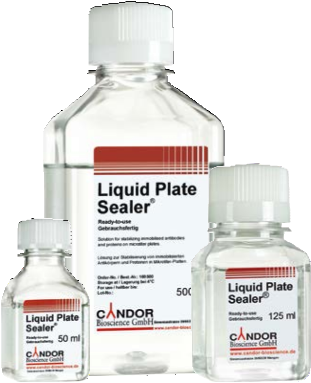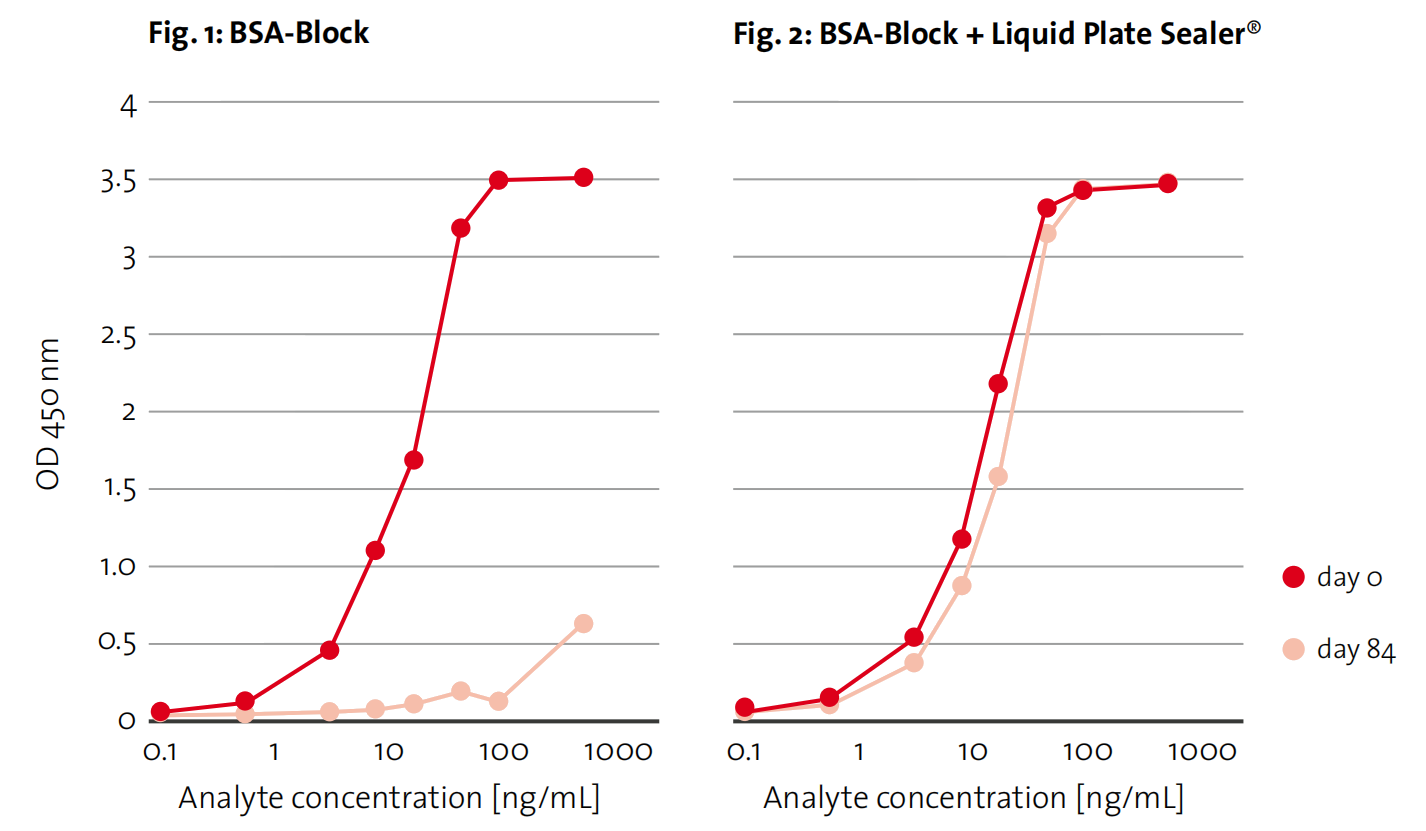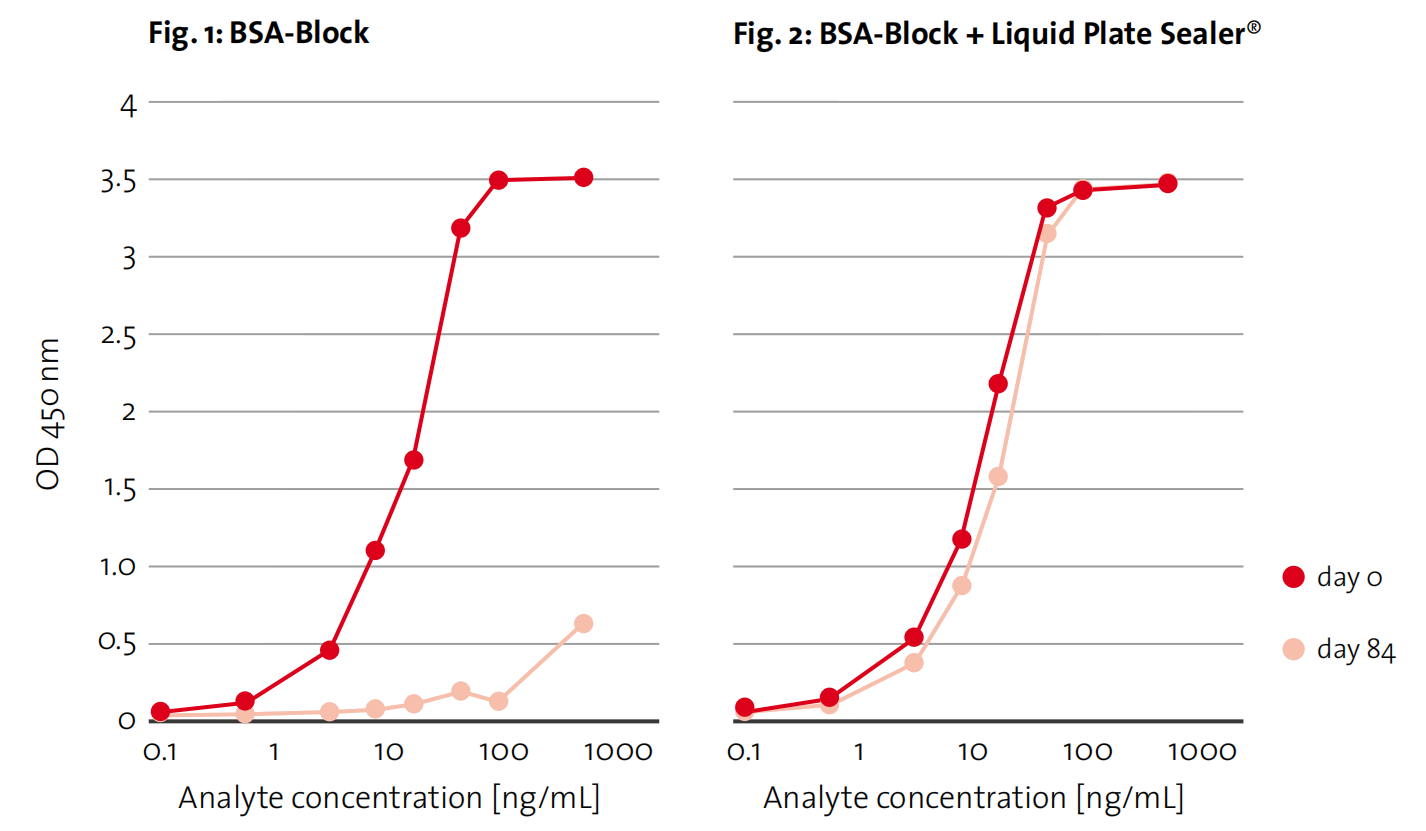



After immobilization of the antibodies/antigens and blocking, Liquid Plate Sealer® seals the plates with a uniform stabilizing layer demonstrating good solubility and without affecting the assay afterwards. It can also be used for stabilizing antibodies and antigens after coating on polystyrene- or glass surfaces for protein arrays. Plates treated with Liquid Plate Sealer® can be stored for long periods after drying.
Liquid Plate Sealer® can be used for stabilizing coated ELISA plates, immunochromatographic test strips (lateral flow assays), affinity chromatography columns, protein arrays and for similar applications. It is used as a coating stabilizer for industrial ELISA kit production.


Instructions for use
Liquid Plate Sealer® is ready-to-use. Liquid Plate Sealer® is used directly after blocking and washing. Liquid Plate Sealer® seals and stabilizes coated proteins and antibodies. In case of strong background we recommend using The Blocking Solution (article number 110) before sealing.
The microtiter plate or solid phase is incubated with Liquid Plate Sealer® and dried afterwards. This expands the shelf life of the coated molecules substantially to typically 1 to 3 years when stored cool and dry. The assay buffer or the specimen can be added directly onto the sealed plate (solid phase) for use in the assay. An additional washing step is not necessary.
Sealing:
1. Commonly used coating and blocking procedure for microtiter plate.
2. After blocking: Wash 3 times with 200-300 µL Washing Buffer without detergents (e.g. article no. 146 or 141).
3. Add 200 µL Liquid Plate Sealer® per well and incubate for 15-90 minutes at approx. 20-30°C. (Volume per well should be 50 µL more than the coating volume or minimum the same volume as the coating volume to ensure that the complete coated surface area is covered by Liquid Plate Sealer® .)
4. Remove Liquid Plate Sealer® by suction. You can remove residual buffer by tapping the plate on absorbent paper. Incubate the plate at 37°C until dryness. Incubation time is typically in between 60 to 120 minutes, depending on temperature, incubator type, number of plates in the incubator and the (active) air circulation in the incubator.
An alternative method is air drying of the plate at room temperature (RT). It has to be mentioned that the resulting shelf life (also dependent on the antibodies) can be shorter compared to drying in an incubator. After drying at RT, the plates can be stored in the fridge until their use.
5. Storage: Store the plate sealed in a pouch under dryness (with additional desiccant if necessary) at 2-8°C for up to 1-3 years.
or:
An alternative method is storage of the plate without a pouch in the fridge. The shelf life of the plate will be reduced to several months instead of years. We recommend sealing of the plate with an appropriate adhesive film. Thus influence of air humidity and contamination will be reduced during storage. This simple method is a good and often used option for plates prepared for use in the own laboratory.
Addition of desiccant and sealing in a pouch is not necessary in this alternative approach.
Specifications given regarding the shelf life of the sealed plate represent guidance values only. Longer shelf lives have been reported for some assays, but may not be true for others, thus requiring the testing of the shelf life of each individual assay by the user.
